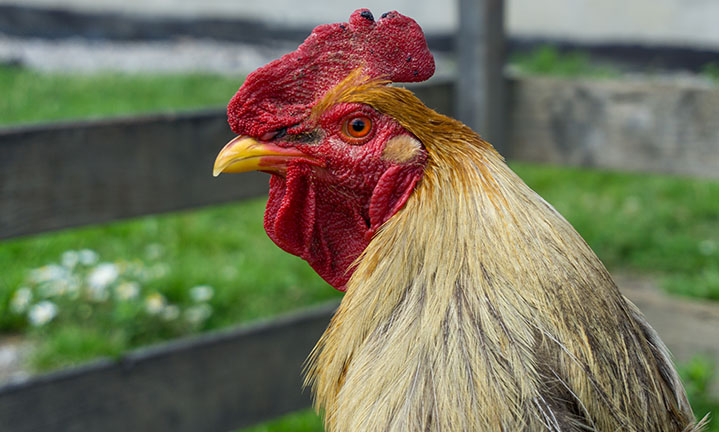Cochin Chicken
Gallus gallus domesticus

At the Zoo
You can find the cochin chickens in the Fisher Family Farm.
Fascinating Facts
- Hens will eat egg or oyster shells to replenish calcium lost while producing eggs.
- There are about 500 breeds of domesticated chickens and eight million chickens worldwide.
- Chickens may have been domesticated in Vietnam as long as 10,000 years ago.
- Roosters actually crow throughout the day and the call is used to establish their territory.
- Cochin ancestors first arrived in the US after the Chinese Shanghai chicken, which was tight-feathered and had moderate to no feathers on their legs, was brought to the eastern coast around 1845.
Physical Characteristics
Cochin chickens are considered an “oriental” breed and best known for their heavy feathering. They have a stocky body, enhanced by their feathers, and a short tail. Both the legs and feet are feathered as well. These chickens generally weigh 7-9 pounds but males can grow up to 12 pounds. They have short wings that are not well adapted for flying. Males are larger than females and sport a comb and waddle. Both males and females can grow sharp spurs on the inside of legs, but are typically used by roosters for fighting.
Cochins are found in a great variety of colors including: white, black, laced, blue, shades of brownish-gold and buff.
Lifespan is 8-10 years.
Habitat/Diet
Domestic chickens are believed to have descended from wild jungle fowl in China and southeast Asia. Today, cochin chickens are primarily found on farms.
Like other chickens, cochins are omnivores. They eat seeds, insects, worms, grubs, greens and even mice. Chickens also regularly swallow gravel or small stones that are stored in the gizzard to aid in digestion.
Social Behavior
Cochin chickens are social animals; usually found in groups with one male and several females. Compared to other chickens they are quiet, rarely heard crowing or clucking. Cochins are well known for their calm and gentle disposition; making them popular farm residents.
Their small wings and heavy bodies make them unable to fly long distances; although they do roost in low trees. Nests are made on the ground and females incubate using a bare patch of skin on her chest that develops when brooding. Each clutch yields about a dozen eggs and hens stop laying when the nest “feels full”. Medium size brown eggs are incubated for about three weeks. Chicks begin eating after a few days but are not fed by parents; instead the hen locates food for chicks and they feed on their own.
Status In The Wild
This species is not classified by the IUCN but is very common.
